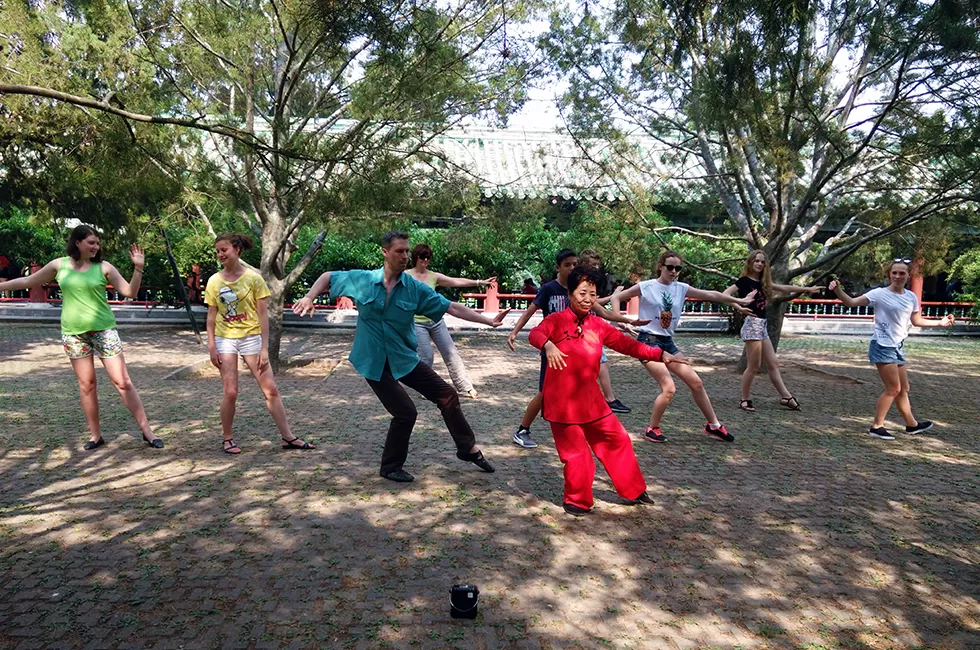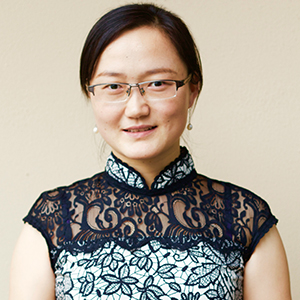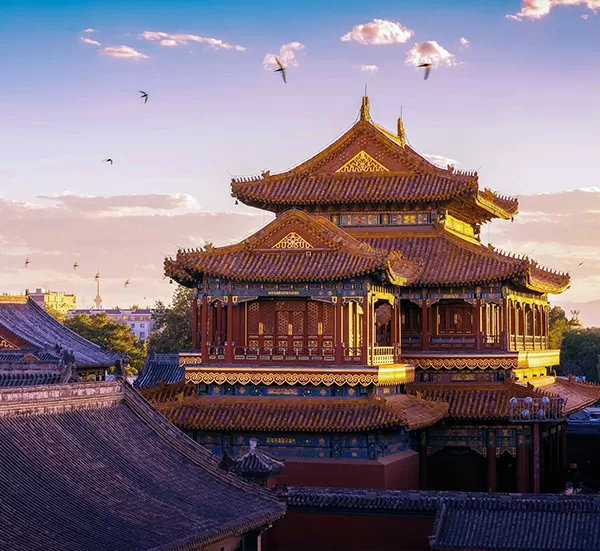Top Beijing activities and outdoor adventures
Cultural activities in Beijing are very colorful and popular, many of which are experienced in the homes of local residents in distinctive hutongs such as making dumplings, paper cutting, making kites, making Chinese knots, learning cloisonné, learning Tai Chi at the Great Wall, etc.; as well as some special outdoor experiences such as camping on the Great Wall, helicopter tours of the Great Wall, dinners at the Great Wall, great wall hiking, dinners at the Forbidden City, etc.. Visit top attractions in Beijing>>
Cultural hand-on activities
Learning Chinese calligraphy in Hutong
- Type: Cultural Immersion/Art
- Duration: 30 minutes – 1 hour
- Location: Hutong dweller's home
Deep in the Hutong you will visit a family living in a traditional Chinese courtyard (sì hé yuàn,四合院). In this tranquil courtyard, interact with the dweller to know more about Chinese culture and Beijinger’s life. Then you will learn an impressive new skill as you follow the delicate brush strokes of the dweller who excels in Chinese calligraphy. Calligraphy writing is a way to cultivate personal character and to promote inner peace. Traditionally, for beginners they need to copy their teacher’s writing and practice over and over again to perfect their skills so to get their own writing styles. However, in this lesson, you will not be expected to practice each stroke countless times before moving on since it’s impossible to master Chinese calligraphy within an hour. While you might not become a calligraphy master within this lesson, undoubtfully you will get a better understanding of some skills and delicate techniques used in Chinese calligraphy.
After knowing the history of calligraphy and gaining knowledge of the Four Treasures— brush, ink, paper, and ink stone, you will practice using these genuine Chinese tools. Learn how to write different brush strokes using Chinese brush, then, under the expert-eye of the skilled calligrapher, try your hand at writing Chinese characters and your name in an artistic style. At the end of the lesson, take your completed work home as a special souvenir of your cultural experience. Please take note that experiential learning of calligraphy writing is about 30 minutes while in-depth calligraphy lesson is around an hour. In-depth calligraphy lesson will be conducted by a calligraphy expert from the local calligraphy association. While experiential lesson will be led by the dweller who has been writing calligraphy for years.
Chinese kite making
- Type: Cultural Immersion/Art
- Duration: 40 minutes
- Location: Hutong dweller’s home
Kite (fēng zhēng,风筝) has over 2,000 years of history. It was originally invented by Mo-tse, a great philosopher and educator during the Warring States Period, and was used for military purposes to convey massages in the war.
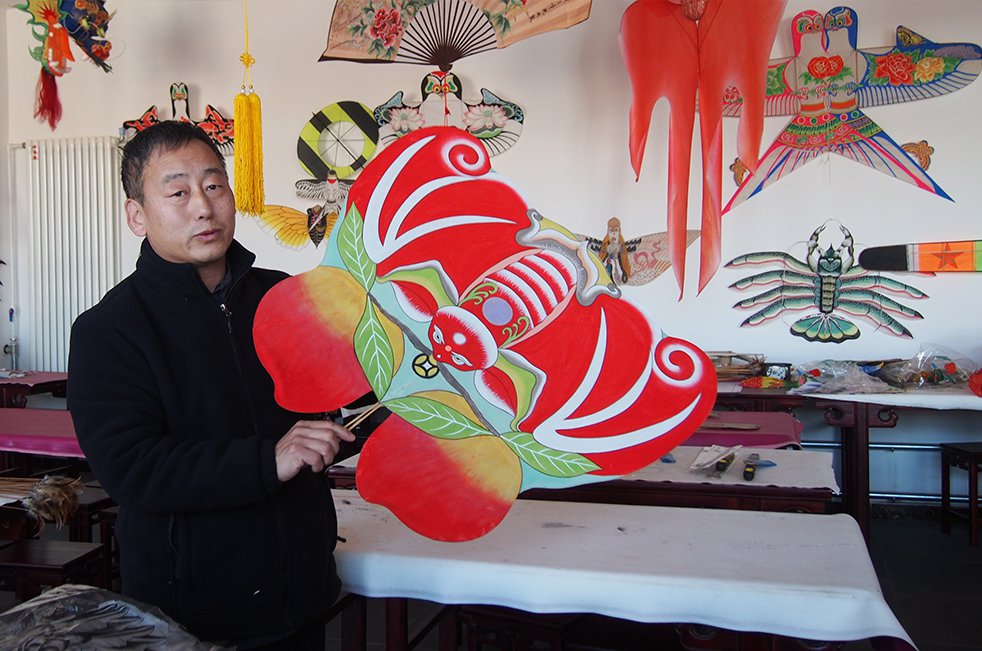 Kite Making
Kite MakingOn this trip, you will meet a local kite lover, in Beijing Hutong, who will introduce you to the making and decorating kites. Your personal teacher will guide you on making a simple version of kite, from making the frame of the kite to decorating it. When finished, you can keep the kite as a souvenir. Though the kite might be a bit small to fly in the mild wind, you can keep in as a decoration.
Chinese Knots Making
- Type: Cultural Immersion/ Art
- Duration: 40 minutes
- Location: Hutong dweller’s home
You will visit a traditional Chinese family courtyard in Hutong; learn about the culture and daily life of Hutong dwellers in Beijing before learning how to make a Chinese knot from them. Chinese knot (zhōng guó jié,中国结) is an ancient art form that produces vibrant decorations that are thought to bring good luck. This decorative art form began as a type of Chinese folk art in the Tang and Song dynasty and is still very much alive today.
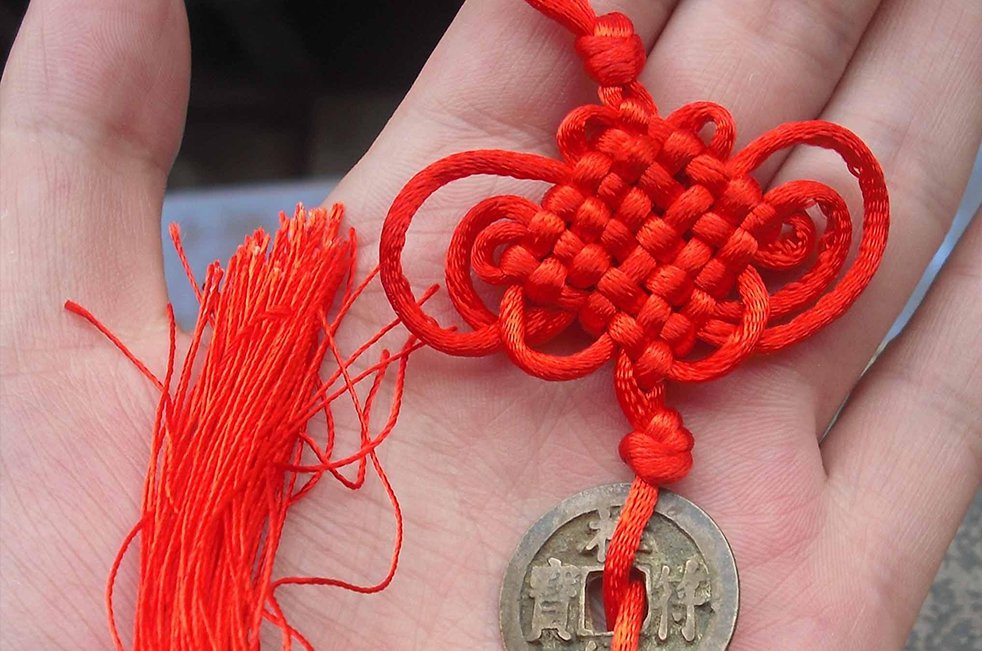 Chinese knot
Chinese knotTraditionally, Chinese knots are handmade, but now most knots are mass produced in factories. In the past, they were made of silk, and now made using red paracords that are of other materials. The intricate procedure produces fabulous art pieces that are a common sight around Chinese New Year. Red is the most auspicious colour in China, and Chinese knots are known to bring good luck when made in the customary red colour. Make your very own Chinese knot under the guidance of the skilled local artist. At the end of the lesson, put it up on your bag or key chain to bring you good luck and as a special souvenir of your cultural experience.
Chinese yo-yo experience
- Type: Cultural Immersion/Art
- Duration: 30 minutes
- Location: Drum Tower Square
- Condition: Minimum of two participants
Playing diabolo (kōng zhú,空竹) or the Chinese yo-yo is one of the popular sports in China that combines art, culture and exercise together. It can be dated back for more than 1,000 years. The typical yo-yo is shaped like two disks connected by an axle. It is spun by a string winded around its central axis and by moving two sticks connected by the string; one can perform many tricks with it. An experienced player can perform really fantastic tricks.
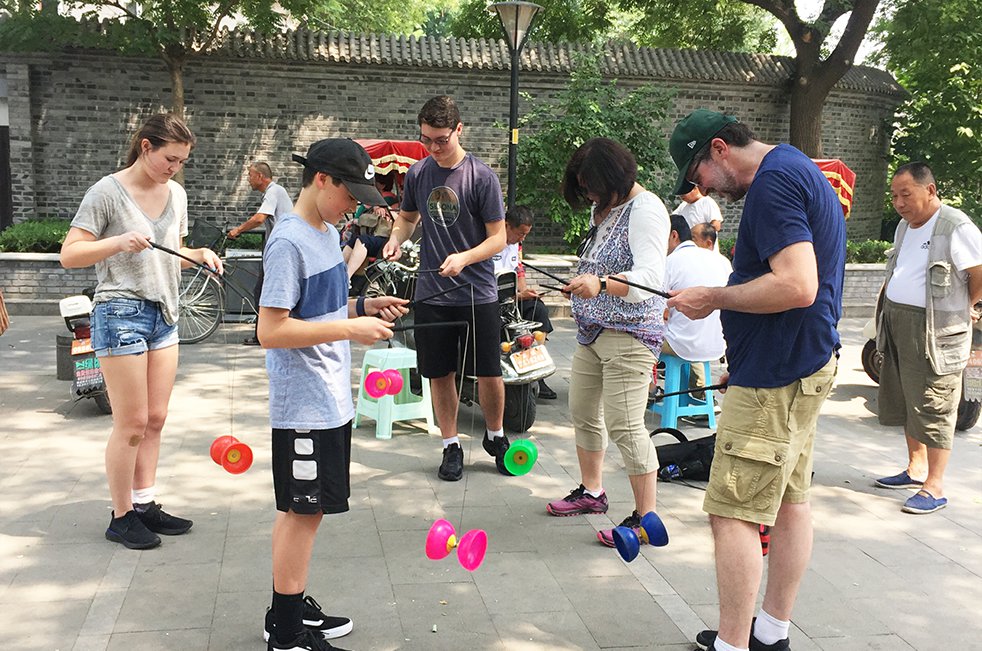 Chinese yo-yo experience
Chinese yo-yo experience
You will learn how to play a Chinese yo-yo at Drum Tower Square. It can be a very fun experience once you get the hang of it. Of course, those tips will be taught by a local Chinese yo-yo master. Traditional Chinese yo-yo is made from bamboo, though you will be trying out using plastic one. Plastic diabolo is lighter and easier to handle for beginner. Playing Chinese yo-yo can exercise one's muscles and trains one's alertness, so this lesson is suitable for people of all ages.
Cooking class
- Type: Cultural Immersion/Food
- Duration: 2-3 hours
- Location: Hutong dweller’s home
- Condition: At least four days of advance reservation
In Hutong, follow a former Beijing chef to make 2 to 3 achievable local dishes in a traditional Chinese home setting and a friendly atmosphere, enjoy the meal prepared by yourself in the end. Based on your levels of skills in Chinese cooking, and your food preferences, we will arrange suitable dishes for your experience. This is a window to Beijing local's live, and a great chance to brush up your Chinese cooking skills, so you are able to cook authentic Chinese dish at home after taking this cooking class. The course is totally family friendly and it's great for family bonding. If you are travelling with your friends, this is also the best moment for friendship building.
Once you arrive at the local house, the owner will introduce you to her kitchen and different Chinese cooking utensils. You will know what are the dishes for your course and the ingredients be used, then start to learn how to chop food materials in a Chinese way. The owner might prepare different cooking ingredients based on seasons. To cook Chinese dishes, you have to learn how to use a wok. Your private tour guide will help you to translate so you will master every secret of Chinese cooking. You can throw any question about Chinese cooking at the guide and the chef and they will be very eager to show you the essence of Chinese cooking. Enjoy a delicious meal cooked by yourself at the end of the class. This course is ideal for you to enjoy a moment as Beijinger, and bring back many delicious memories. Please let us know if you have any food restrictions when making a booking.
Exploring private rooms of the Forbidden City
- Type: History/ Art & Architecture
- Duration: Half a day
The palace of 24 emperors in Ming and Qing dynasties, Forbidden City in central Beijing, just by its name gives us plenty of fantasies and wonders. Zi Jing Cheng (紫禁城) is the Chinese name of this palace which means the “Purple Forbidden City”. Ancient Chinese astronomers believed that the purple star of Polaris was the centre of heaven and that the emperor, who was thought as the son of heaven, lived in the purple palace. There are total of 999.5 rooms in the palace though not all are opened to travellers.
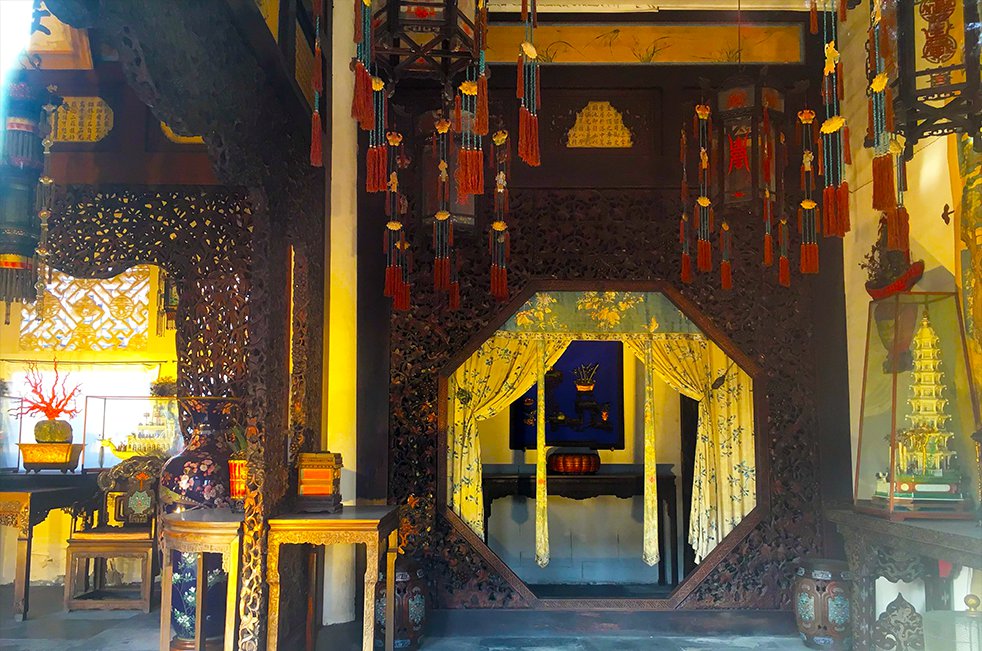 Exploring private rooms of the Forbidden City
Exploring private rooms of the Forbidden CityHowever, in this tour, you will have the opportunity to go beyond the public areas in the Forbidden City and discover the untouched side of the past together with a scholar in Chinese history. Entering through private entrance, follow the scholar to those typical attractions within the palace, before leaving the crowds behind and explore the “forbidden” areas such as restricted gardens and the Hospital for Cultural Relics.
Learning Chinese calligraphy
- Type: Cultural Immersion/Art
- Duration: 30 minutes – 1 hour
- Location: Hutong dweller’s home
Deep in the Hutong you will visit a family living in traditional Chinese courtyard (sì hé yuàn,四合院). In this tranquil courtyard, interact with the dweller to know more about Chinese culture and Beijinger’s life. Then you will learn an impressive new skill as you follow the delicate brush strokes of the dweller who excels in Chinese calligraphy. Calligraphy writing is a way to cultivate personal character and to promote inner peace. Traditionally, for beginners they need to copy their teacher’s writing and practice over and over again to perfect their skills so to get their own writing styles. However, in this lesson, you will not be expected to practice each stroke countless times before moving on since it’s impossible to master Chinese calligraphy within an hour. While you might not become a calligraphy master within this lesson, undoubtfully you will get a better understanding of some skills and delicate techniques used in Chinese calligraphy.
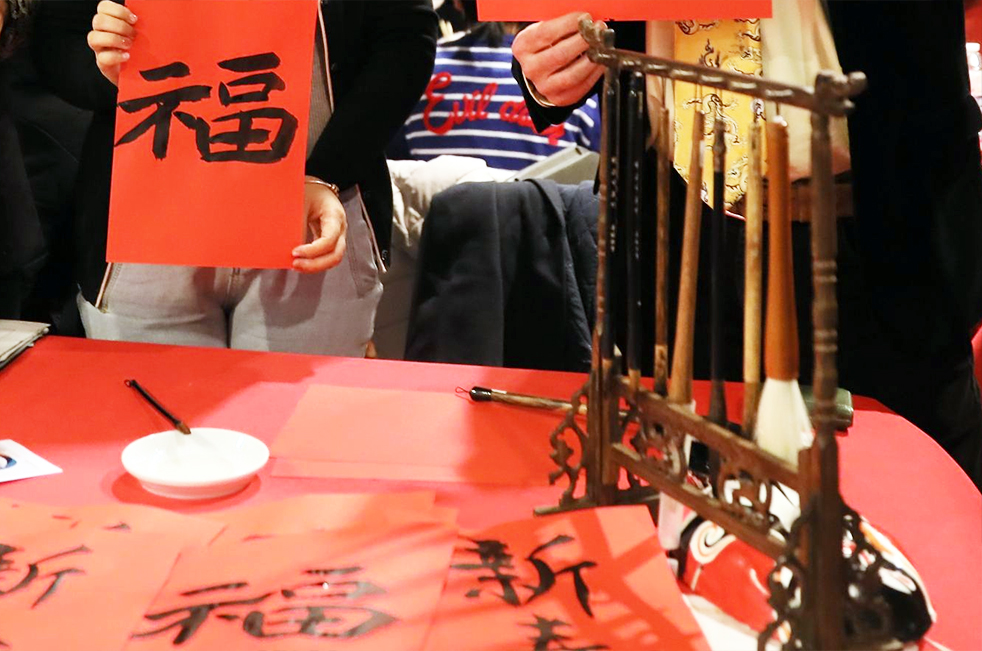 Calligraphy
CalligraphyAfter knowing the history of calligraphy and gaining knowledge of the Four Treasures— brush, ink, paper, and ink stone, you will practice using these genuine Chinese tools. Learn how to write different brush strokes using Chinese brush, then, under the expert-eye of the skilled calligrapher, try your hand at writing Chinese characters and your name in an artistic style. At the end of the lesson, take your completed work home as a special souvenir of your cultural experience. Please take note that experiential learning of calligraphy writing is about 30 minutes while in-depth calligraphy lesson is around an hour. In-depth calligraphy lesson will be conducted by a calligraphy expert from the local calligraphy association. While experiential lesson will be led by the dweller who has been writing calligraphy for years.
Learning Tai Chi
Learning Tai Chi at Temple of Heaven
- Type: Cultural Immersion/ Fitness & Health/ Art
- Duration: 1 hour
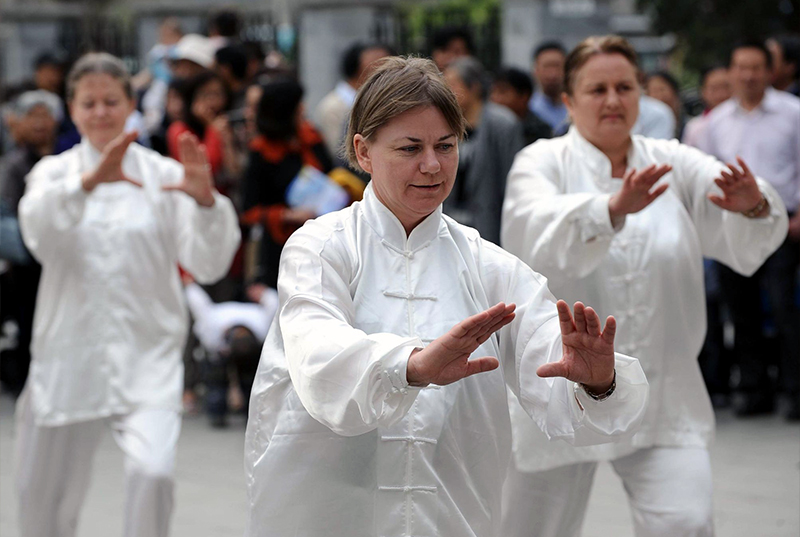 Learning Tai Chi
Learning Tai ChiStruck by the silent grandeur of those ancient architectures in Temple of Heaven Park, you will be introduced to the ancient arts of Tai Chi here. It is best to wake up early in the morning and visit Temple of Heaven Park where you can see locals taking part in their daily morning exercises. Immerse yourself in Chinese culture in a unique way through learning Tai Chi from a renowned local Tai Chi master. Tai Chi has been found to improve one’s balance, leg strength, cardiovascular endurance, muscular flexibility, ability to concentrate, overall wellness and longevity. Tai Chi literally means ‘great ultimate’ which is a reference to the Yin and the Yang processes of dynamic balancing. Learning Tai Chi in Temple of Heaven Park can be once in a lifetime experience for many people. The local Tai Chi master will demonstrate some basic movements and gestures step by step. Not to worry even if you are a total beginner to Tai Chi, as the master will correct your movements during lesson. You can also learn Tai Chi on Drum Tower Square, in Taoist temple or on the Great Wall.
Paper Cutting
- Type: Cultural Immersion/Art
- Duration: 30 minutes – 1 hour
- Location: Hutong dweller’s home
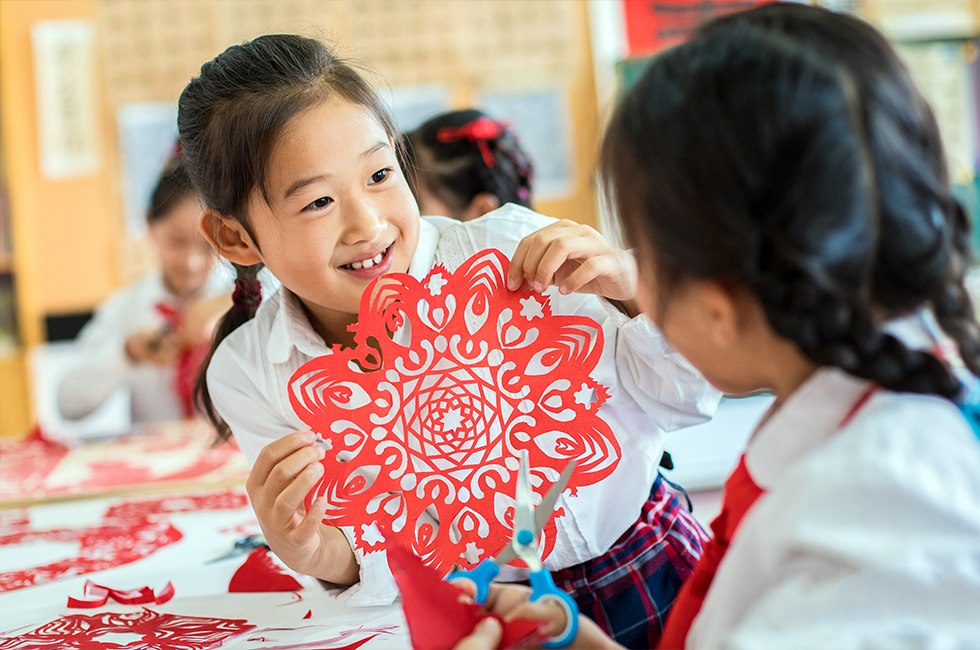 Paper Cutting
Paper CuttingFind a slice of old Beijing here deep in the Hutong and visit a family living in traditional Chinese courtyard (sì hé yuàn,四合院). In this tranquil courtyard, interact with the dweller to know more about Chinese culture and Beijinger’s life. Learn traditional Chinese paper cutting from the dweller who mastered this skill. Paper cutting is one of China’s most famous folk arts. It is more often used during festivals for decorative purposes and to wish people good health and prosperity. The most intricate designs require patience and years of practice.
Here, you will learn to cut simple yet beautiful motifs within an hour. Under the expert tutelage, you will first be introduced to the history of paper cutting, its place in modern Chinese culture and some techniques of paper cutting. Then, create your own pattern to bring back home. Please note that the experiential learning of paper cutting is about 30 minutes while in-depth paper cutting lesson is around an hour. In-depth paper cutting lesson will be conducted by a bilingual expert who teach paper cutting. While, experiential lesson will be led by a local who has been doing paper cutting for years. Also, there will be some differences in the material used for course.
Peking Opera culture immersion
- Type: Cultural Immersion/Art
- Duration: 40 minutes (Mon, Wed, Fri)
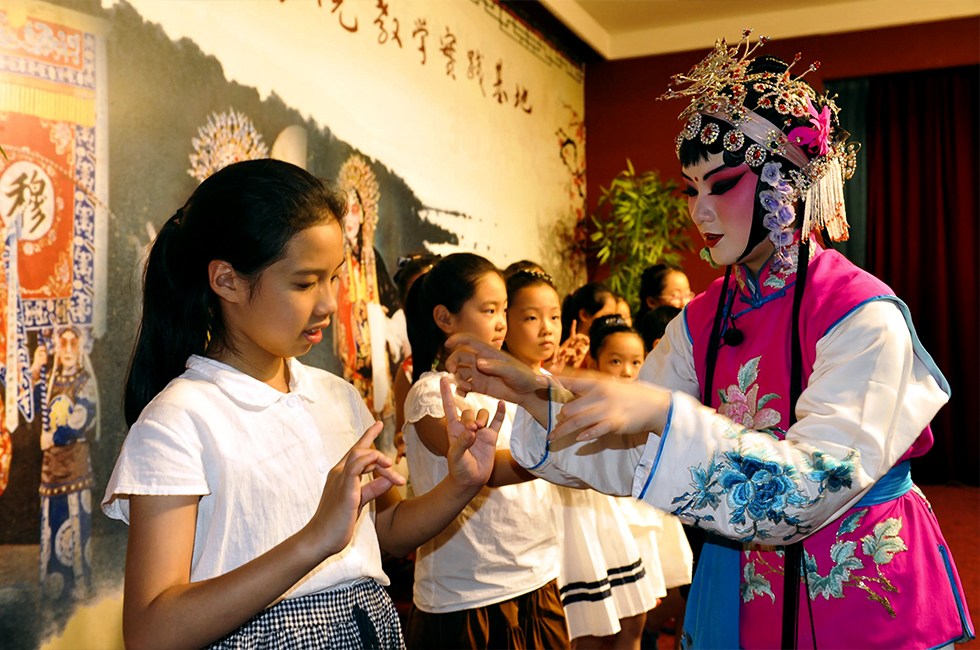
In this interesting lesson, you will learn about some gestures and movements of Peking Opera, from a local Peking Opera performer, while dressing up in simple opera costumes. During the lesson, she will tell you some of the history of Peking Opera, and give a short performance on it. You can arrange this course together with Peking Opera mask painting, so you can wear your own opera mask during the lesson.
For Peking Opera enthusiasts, there is another lesson where you will learn Peking Opera from a national level opera master. Putting on full makeups, wearing the full costume and learn the basic movements from the master. This 3 hour class can be truly a fantasy opportunity and can give you an everlasting memory in Beijing. Check out for more information with our tour advisers about this class.
Peking Opera mask painting
- Type: Cultural Immersion/Art
- Duration: 40 minutes
- Location: Hutong dweller’s home
Hutong has been the home of Beijing locals since the imperial times. It represents an important cultural element of Beijing. Savour the relaxing pace of local life as you stroll down the labyrinthine alleys in Hutong. Visit the home of a local family, where you can learn Peking Opera mask painting and know about locals Hutong life in this modern day. Peking Opera is a national treasure that has a history of over 200 years, while Peking Opera mask is a local folk art. Various colours painted on performers’ faces in a Peking Opera show represent different characters with certain character traits.
During the painting class, local will explain to you the history of Peking Opera and each character's story and role in an opera. Then, based on the samples given, copy or design your own Peking Opera mask. Bring your completed work home as a special souvenir of your cultural experience in Beijing Hutong.
Underground dining in the Forbidden City
- Type: History/ Art & Architecture/ Food
- Duration: 2 hours
While visiting the Forbidden City, do not miss out the subterranean hidden gem near Cining Gong or the Palace of Compassion and Tranquillity. You will find a restaurant called Royal Icehouse which was once the ice cellar of the royal family. Catch this opportunity to enjoy a unique dining experience here at Royal Icehouse. This arched stone cellar was built more than 300 years ago to store oversized ice cubes which could be then used during summer. Welcomed by the cool underground air before enjoy your meal in this intriguing restaurant. Feel free to explore the surrounding to find name of craftsman inscribed on each bricks on the wall in this once “royal refrigerator”.
Sugar Painting
- Type: Cultural Immersion/Food
- Duration: 40 minutes
- Location: Hutong dweller's home
Sugar painting is a traditional Chinese form of folk art using hot, liquid sugar to create two dimensional figures. This snack is prevailing in northern China and is especially popular among children. This traditional folk art originated from the Ming dynasty when sugar animals and figures were made in moulds as part of a sacrifice in religious rituals. In the Qing dynasty, sugar painting gained more popularity and the production techniques were upgraded to have more patterns, most of which were auspicious animals such as fish and Chinese dragon.
In the Hutong, you will observe and taste this sweet art that will add a sugary experience to your journey. First, boil brown sugar, white sugar and little amount of malt sugar on fire till they turn into liquid state. Next, people will select a figure that the sugar painting artist will draw by spinning roulette. Then, the ‘sugar painter’ will scoop a ladle of molten sugar to create pattern by drizzling hot sugar on a flat surface. He has to finish painting before the sugar hardens. When completed, a thin wooden stick will be used to hole the figure, by attaching in two or more places with more sugar. Finally, remove the figure from the surface using a spatula-like tool when the sugar is still warm and pliable. As when the sugar gets harden completely, it will be too fragile to be removed from the surface. After seeing the demonstration, you will have the opportunity to try your hand at sugar painting.
Dumping Making
- Type: Cultural Immersion/Food
- Duration: 40 minutes
- Location: Hutong dweller's home
Food is the best way to explore Chinese culture. You can learn some authentic and quintessential Chinese food here in Hutong. Follow our lead into a local courtyard residence in Hutong, where you will try your hand at dumpling making. Follow the guidance step by step, make your own dumplings and then dig your chopsticks into this fantastic cuisine.
There are more than hundred types of dumplings (or Jiao Zi, 饺子) in China. However, dumplings are either boiled, steamed, deep fried or shallow fried. Usually when we talk about dumplings, we are referring to boiled dumplings (or Shui Jiao, 水饺), not potstickers (Guo Tie, 锅贴) or steamed ones. Handmade dumpling wrappers are tender, with a silky mouth feel. The filling is well balanced with meat and vegetable, nice in flavour, comforting and not too greasy. Of course there are dumplings filled with only vegetable. Boiled dumplings are moist and juicy. Just a small bite, the hot and appetizing soup will drizzle from the filling. If you’ve ever tried Shanghai steam soup dumplings (Xiao Long Bao, 小笼包), you will know this feeling.
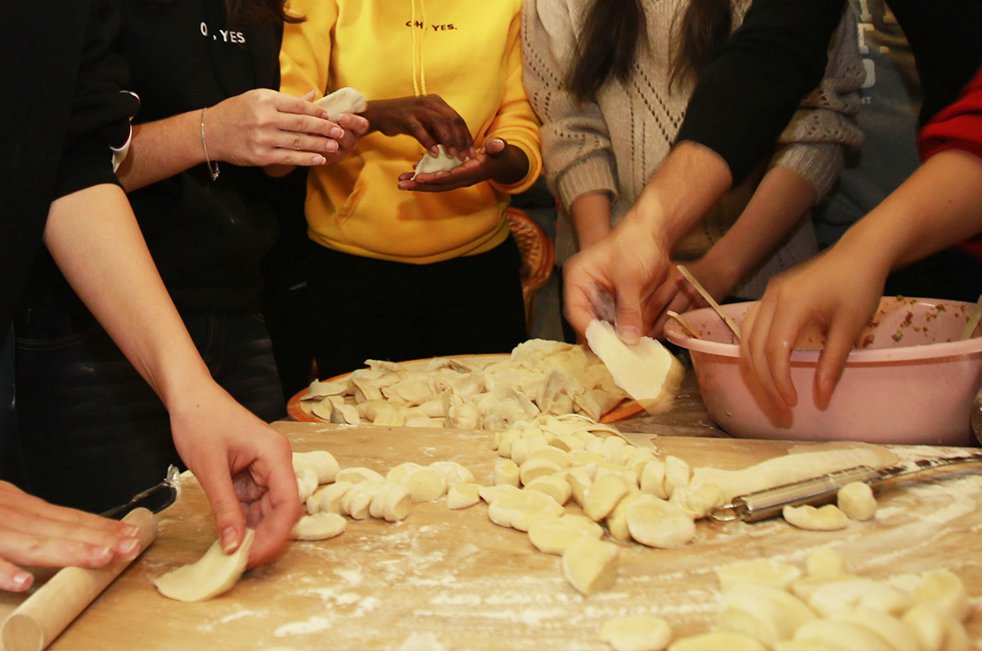 Dumping making
Dumping makingBoiled dumplings are the most important dish for celebrating Chinese (Lunar) New Year in northern China. It is a ritual comparable to that of the roast turkey at Thanksgiving. In the past, this dish is served on New Year’s Eve, when all the family members are gathered at home. The pronunciation of dumpling phonetically also refers to bid farewell to the old year. Moreover, the shape of dumpling is like an ingot, which is a type of money in China, used in the ancient time. This shape symbolizes wealth. While ancestors believed that eating dumplings is a way to bring good luck (though now as the average living standard increases, people can eat it at any time).
Outdoor Activities
Camping on Great Wall
- Type: Relaxation & Nature
- Location: Gubeikou Great Wall/ Jiankou Great Wall/Huanghua Cheng Great Wall
The Great Wall of China is a wildly popular day trip destination; you won’t see any crowds on the wall at night (except for Simatai Great Wall that opens until night time). But we offer this once in a lifetime opportunity for you to spend the night under a blanket of stars on Great Wall. You probably don’t want to drive to the Great Wall and spend just one night there then leaving on the next morning. Usually hiking on the less visited sections of the Great Wall can be a perfect match with camping on the wall. You can choose either to camp on Gubeikou Great Wall, Jiankou Geat Wall or Huanghua Cheng Great Wall, depending on your hiking route. After spend the day hiking on the wild, unrestored part of the Great Wall, we will camp overnight at a super scenic spot where you will be able to enjoy the splendid view of sunset, sunrise, and beautiful moonlight from the Great Wall. With the sun setting, find no others around, and only the sounds of birds accompanied by the kaleidoscope of shimmering rays that beam their way across the evening sky.
After a night, wake up to the splendour of sunrise and see the historic barrier glowing. You can choose to continue your hike further. This is an absolutely unique experience that should be on top of your bucket list. Bring enough food and water from Beijing to get you through the day and night, as in these remote areas there won’t be any shops to buy anything, and meals will be prepacked food. It is best to bring your own camping gears. Also, to ensure a sustainable tour, make sure you take all your trash back with you and dispose it into the dustbin.
Cycling & Great Wall hiking
- Type: Relaxation & Nature/Fitness & Health/History & Architecture
- Route: Yuda Hot Spring –Simatai Great Wall
- Distance: Around 2.5 km
- Time: 6:00-9:00/10:00-13:00/15:00-18:00
- Recommended For: Intermediate riders
No visit to Beijing is complete without seeing the incredible Great Wall of China. In this three-hour activity, we will be cycling along the wall and hiking on Simatai Great Wall. Starting from Yuda Hot Spring, we will cycle towards Simatai Great Wall. Feel the wind brushing against your face, as we ride up closer to the wall, it becomes larger and clearer. Cycle to the foot of Simatai Great Wall, park your bike at the parking slot, we will move on to Simatai Great Wall. Simatai Great Wall, built during the reign of emperor Hongwu in Ming dynasty, is famed for its precarious gradient of the battlements.
After restoration of the Simatai Great Wall, only 10 watchtowers are available to hike on. Spot some rare features at Simatai, such as ‘obstacle walls’ – walls within walls used for defending against enemies who had already clambered the battlements. Have a panorama view of the nearby Gubei Water Town nested within wooded mountains with majestic walls as backdrop. This can be wonderful experience to your Beijing trip.
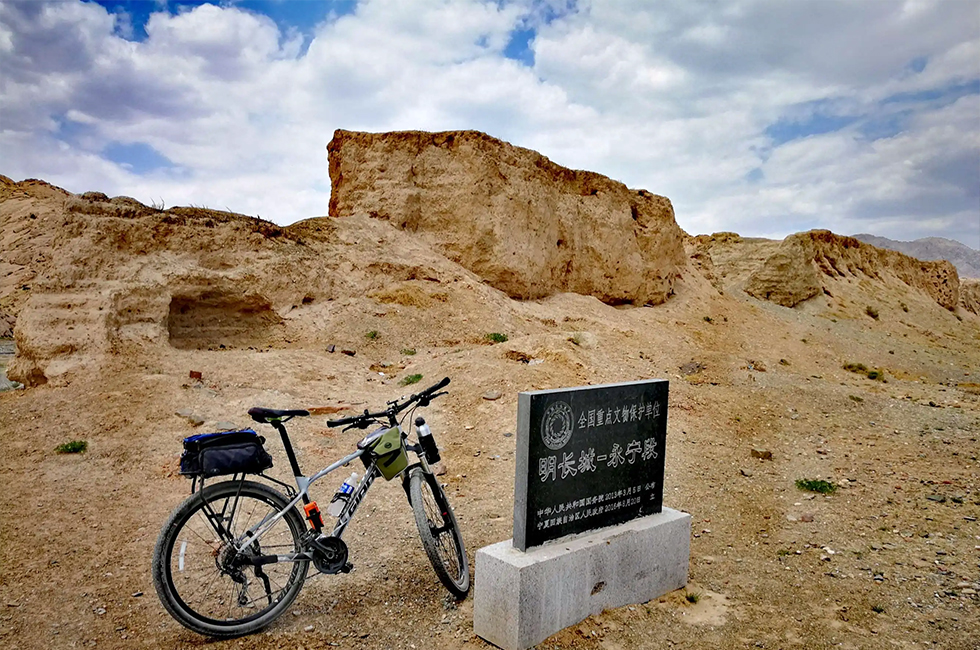
Cycling along Simatai Great Wall
- Type: Relaxation & Nature/Fitness & Health
- Route: Yuda Hot Spring –Mandarin Duck Lake Reservoir
- Distance: Around 1 km
- Time: 10:00-12:00 / 14:00-16:00
- Recommended For: Beginner/ Family with kids
The Great Wall of China remains one of humankind’s engineering miracles. Cycling along this awe-inspiring structure would be a wonderful experience. This relaxing and enjoyable activity is suitable especially for families with kids. Cycling from Yuda Hot Spring to Mandarin Duck Lake Reservoir, you’ll glimpse the wall as it snakes its way up and down the mountains in the distance.
Simatai Great Wall was first built in the early Hongwu years (1368-1398) of the Ming Dynasty. With little renovation it still retains in its original look. This is a wonderful opportunity to view the Great Wall from a different angle. Upon reaching the reservoir, continue your journey by walking down the path along the reservoir before this journey ends.
Great Wall helicopter overlook
- Type: Nature/ History & Architecture
- Duration: 10 mins— 15mins
- Location: Badaling Great Wall/ Mutianyu Great Wall
If climbing the Great Wall is not enough to satisfy you, and then take a helicopter ride to get aerial views of the entire Mutianyu or Badaling Great Wall. Badaling Great Wall was the historically strategic gateway between the fertile lands of Central Plain and the barren, uninhabitable plains beyond. You may not want to visit Badaling on foot as it is the busiest section of the Great Wall. Famous for its Ming-era guard towers and excellent views, Mutianyu Great Wall is well set up for families, less crowed than Badaling and easy to access.
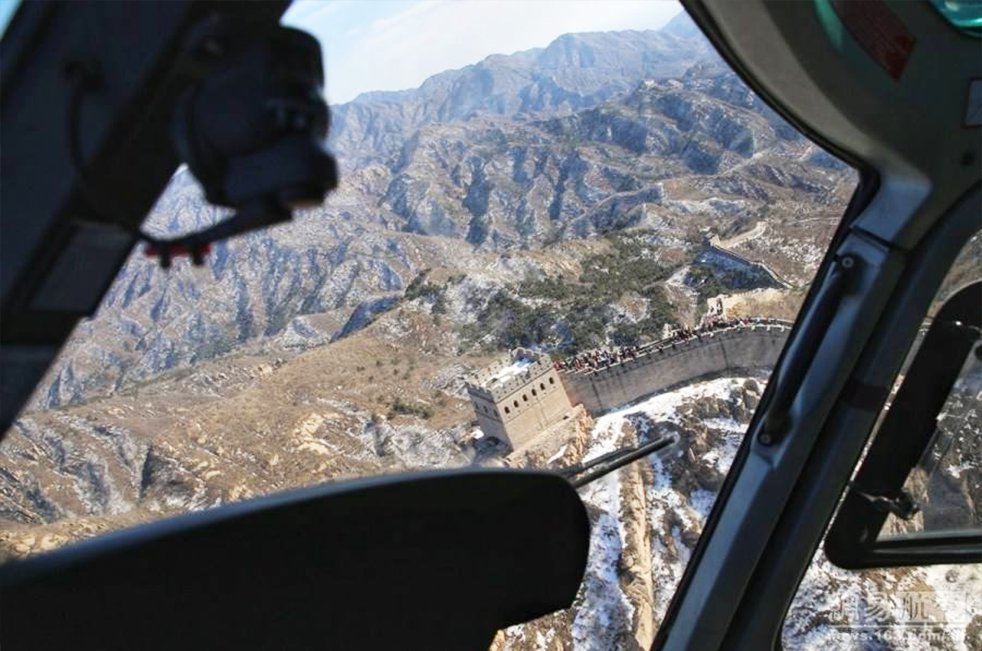 Great Wall helicopter overlooking
Great Wall helicopter overlookingFrom the sky, see this marvellous and breath-taking world wonder and feel the splendid of it, you will have an amazing and everlasting memory about this experience. You can consult our advisors for more information as there are different kinds of experience available with some enable you to see the wild Great Wall, which is iconic and in disrepair. Please note that helicopter service opens based on weather conditions.
Hutong culture discovery
Hutong art
- Type: Cultural Immersion/Fitness and Health/Art
- Duration: 45 mins-90 mins
- Location: Hutong in Dongcheng District
Hutongs wind through local residences, exposing years of tradition and history. These historic, labyrinthine alleyways are where ‘real’ Beijing life happens. The best way to explore these timeless mazes is by bike or by foot. As we weave through these ancient alleyways with some are older than 700 years, we will explore the lives of dwellers in Hutong, learn some traditional Chinese art and crafts and listen to the story of people living here for decades.
Hutong walking
- Duration: 75mins-90mins
- Free Chinese knot will be given as souvenir to each person.
Bell and Drum Tower Square+ Bird eye view of Hutong from the top of Bell and Drum Tower+ Water calligraphy experience + Meandering through Hutong+ Home visit to Hutong family+ Paper cutting/Chinese calligraphy experience (choose one)
Hutong biking
- Duration:45mins - 1h
- Free Chinese knot will be given as souvenir to each person.
View the exterior of Bell and Drum Tower + 30 minutes biking through Hutong + Home visit to Hutong family
Night Activities
Chaoyang Acrobatic Show Beijing
- Show Time: 14:30; 15:50; 17:30; 19:15 daily
- Duration: 1 hour
- Address: No. 36 North East Third Ring Road, Chaoyang District, Beijing
This breath-taking and memorable acrobatic art performance at Chaoyang Theatre that both kids and adults will love is certainly worth going. With precise and daring action, Chaoyang acrobatic show is the most popular one in Beijing. Acrobatic is the performance of extraordinary achievements of balance, agility and coordination. At Chaoyang Theatre you will be surprised by performers who display amazing skill, agility and strength as they perform gravity-defying balancing acts, contortion, aerial manoeuvres and more. With colourful costumes, dramatic lighting, intriguing background music and bravo performance, this show sure is an unforgettable one.
Peking Opera Show
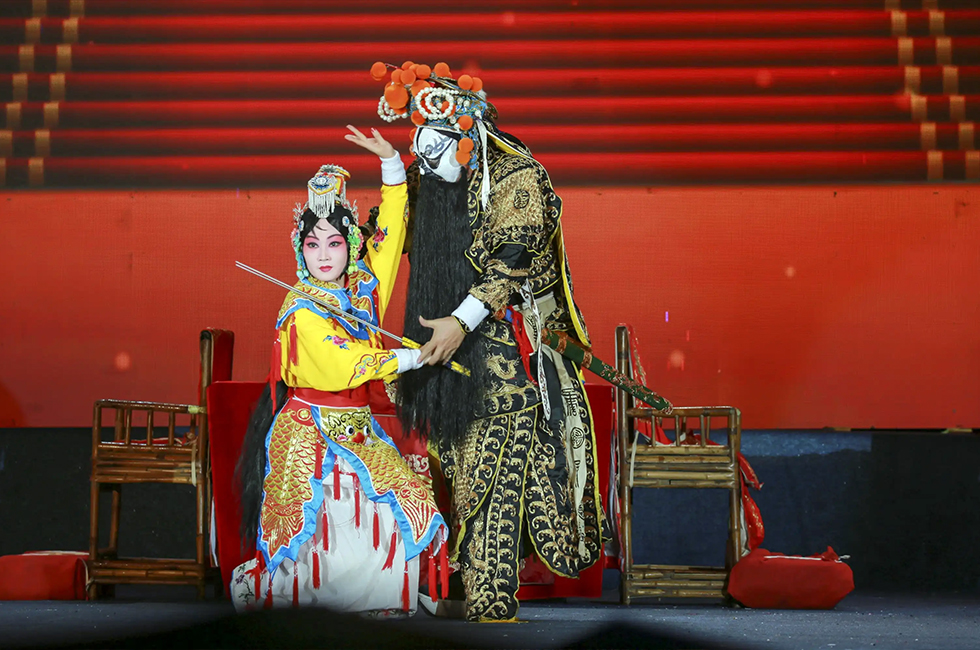
- Show Time: 19:30-20:50 daily
- Address: No. 175 Yong’an St., Xuanwu District, Beijing
You probably don't want to miss out Peking Opera show during your travel in Beijing. Other than watching Peking Opera at Huguang Guild Hall, Liyuan Theatre is another choice for you. Located inside Qianmen Jianguo Hotel, Liyuan Theatre is the largest Peking Opera show theatre in Beijing. Peking Opera is regarded as the quintessence of Chinese culture. It has more than 200 years of history. Besides Yu Opera, Yue Opera, and Huangmei Opera, Peking Opera, is one of the four most popular traditional Chinese operas. Peking Opera is a traditional style of Chinese theatre performance encompasses theatrical face makeup, exquisite costumes, graceful gestures, martial arts, acrobatics, and vocal performance. Storylines of Peking Opera often take reference of historical tales, myths and legends and popular romances. One of the famous Peking Opera many may heard or watched before is the "Farewell My Concubine".
There is only one performance per day, starting from 7:30pm. You may want to reach the theatre 30 minutes earlier. As before the show starts, you can pay a free visit to the backstage to see the performers getting their makeups ready, learn about the makeup process and to take photos with the performers. During the performance, you can refer to the English subtitles shown on the screen in the theatre.
The Legend of Kung Fu
- Show Time: 17:15-18:30 and 19:30-20:45 daily
- Duration: 75 minutes
- Address: Red Theatre, No. 44 Xingfu St., Chongwen District, Beijing
Watching Chinese Kung Fu show will certainly bring you a wonderful experience in Beijing, especially if you are a Kung Fu lover or if you are travelling with your family. This Kung Fu show is performed in Red Theatre which is located near Temple of Heaven in the city area. Anyone who has seen Chinese Kung Fu movies before will be impressed by what the Chinese called Wushu (also known as Kung Fu or martial arts in the west). Kung Fu is a self-defence martial art that utilizes both muscles and brain, and is practiced especially for self-defence, exercise, and spiritual growth.
The Legend of Kung Fu show encapsulates stunning traditional Kung Fu skills, modern dance, acrobatics and music, all in a simple story line. The story tells about a young boy who dreams of becoming a Kung Fu master and achieving enlightenment. He takes the path of a monk, and on his journey, he must face many hardships both physically and mentally to overcome his fears, attain enlightenment and become a true master of Kung Fu. There isn’t any dialogue, but only Kung Fu show. However, there will be English subtitles shown above the stage to keep the audience informed of the story line. The fusion of modern dance with traditional martial arts is what makes this performance unique, spectacular and well-known.
FABULOUS TOUR COMPANY
CHINA OCTOBER - NOVEMBER 2019 We researched several companies and studied reviews on Trip Adviser before contacting who did a very China Culture Tour with an initial query. Right from the outset Grace who owns the company was excellent. She emailed detailed with pictures information and a suggested…read more details
Karen from US
Ready to Create a Unique Dream Travel?
